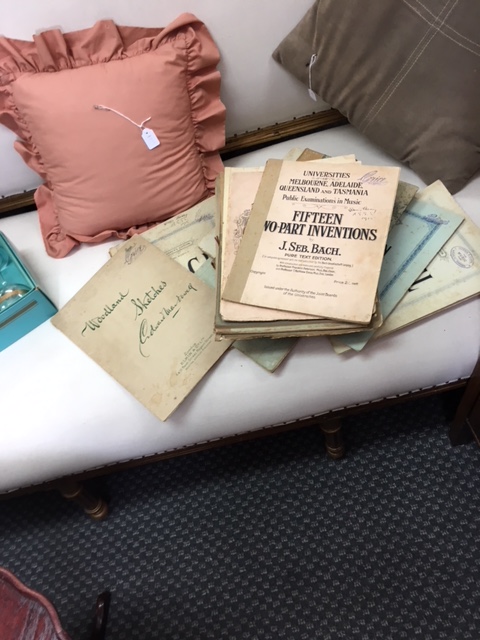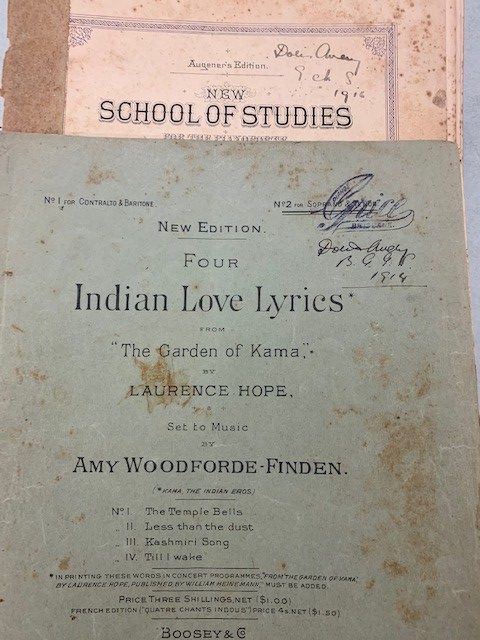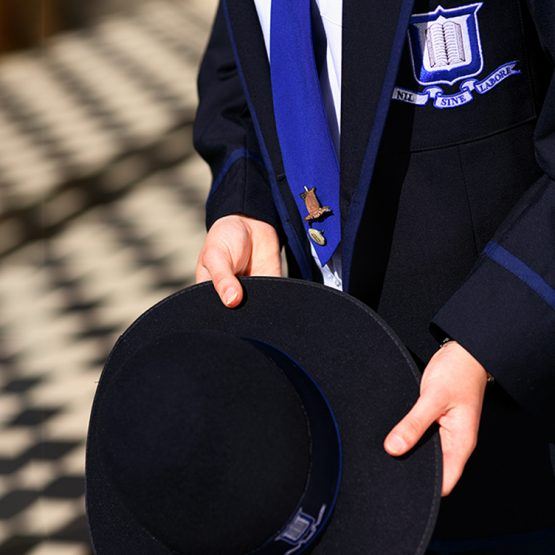Occasionally, we are offered windows into another time in history.
Whether it be poring over black and white photos, watching grainy film reels, or listening to snippets of early audio recordings, it can be enticing and fascinating to ponder the lives lived by those in by-gone eras. We now have such an opportunity with the recent acquisition of a collection of piano sheet music belonging to Miss Doris Avery, a Brisbane Girls Grammar School student, and boarder, from 1913-1915. For me, it provides a fascinating glimpse into our School’s rich history and the life of a Queensland teenager in the early twentieth century.
The acquisition of Doris’ music is a story in itself: an antique dealer in the regional town of Gympie, pointed out the music to Carol McIntosh, a Marrapatta staff member, when she ventured into the store. Understanding the importance of preserving our history, Mrs McIntosh contacted the School, and we are now the proud owners of Doris Avery’s collection of sheet music.

Discovering Doris Avery’s music in November 2017 in a Gympie antique shop
Doris’s sheet music collection, which has her name and B.G.G.S inscribed clearly in cursive script on the covers of some of the items, consists of 20 pieces of piano music. These manuscripts represent some quintessential repertoire pieces for serious piano students, many titles that remain on external music examination syllabi even today.

1913-1915 Boarder, Doris Avery’s sheet music
Under the Principalship of Miss Annie Mackay, at School, Doris would most likely have had music lessons with Mrs Martha Burke, who was appointed to the school in 1908 and held the position of Music Mistress until 1923.
In the late nineteenth and early twentieth centuries, before radio, a piano in the home was a popular form of entertainment, with families gathering around to sing and make merry. This seems to have been the case for Doris Avery’s family, who lived at Nogo Station in Longreach.
I can imagine Doris setting off for holidays from the Grammar Boarding House, armed with newly acquired piano sheets, ready to entertain her family after dinner in the drawing-room of the homestead. Some of the more contemporary works she may have presented at these intimate soirees can be found in this sheet music collection and serve somewhat as a ‘paper playlist’ of the past. We can see piano transcriptions of compositions such as Dream Children, Op. 42 by Edward Elgar, Edvard Grieg’s Wedding Day at Troldhaugen, Valse Triste by Jean Sibelius, and Four Indian Love Lyrics by Amy Woodforde-Finden.

1914 Doris Avery’s sheet music
While Doris Avery’s music collection gives us a glimpse into the aesthetic and artistic world of a Girls Grammar music student in 1915, one cannot help but consider the impact of world events going on beyond the white picket fence at the time. The world would have undoubtedly grown dark for Doris and her cohort with the landing of Australian troops on Gallipoli that year, and in the first few years out of school, Doris and her peers would continue to experience a nation at war. Unfortunately, this would be followed closely by the outbreak of the Spanish Flu pandemic, which made its way to Queensland in the May of 1919.
Despite the 106 years that separate us from Doris’s time as a music student at our School, there remains an enduring connection. Many of the piano students at BGGS today will undoubtedly possess many of Doris’s music titles in their own ‘paper playlists’. The canonical works of JS Bach and Beethoven, the late romantic gems of Grieg, and the rhapsodic poetry of Miriam Hyde being but a few. Engaging with these special objects of substance is a reminder of the importance of music as part of broad liberal education. However, perhaps even more importantly, it is a beautiful and timely reminder of the enduring power of music to sustain us in times of difficulty and challenge.
Mrs Emma Dron
Director of Instrumental Music
The Bechstein Baby Grand Piano (pictured in the banner image) was donated to the School by the Fielding family
Wedding Bells. (1924, June 6). The Longreach Leader (QLD: 1923 – 1954), p. 15. Retrieved August 6, 2021, from http://nla.gov.au/nla.news-article39332708

Doris Avery’s 1914-1916 sheet music collection




